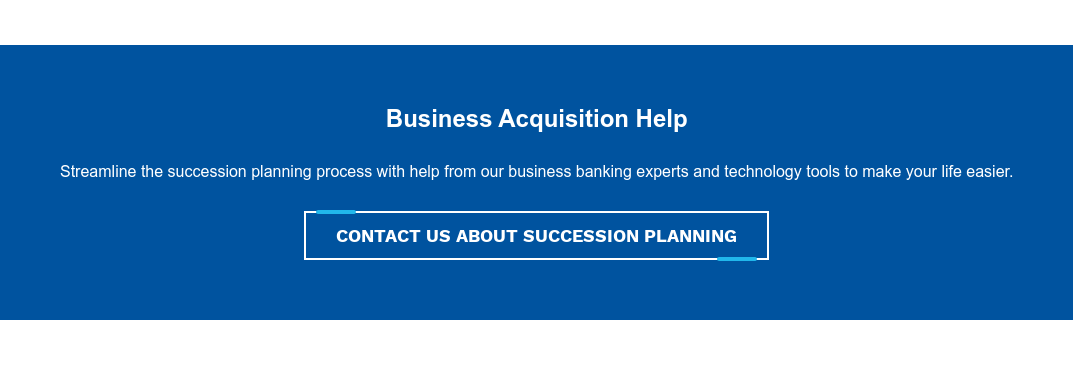Business succession planning is difficult even in normal times. But creating a clear plan during a pandemic and economic uncertainty can be especially challenging.
Succession planning is not a routine, by-the-book endeavor. Every business and every situation are unique. The effort you put into planning and preparation will be essential for a successful sale or merger.
As you begin your succession plan, here are things you need to consider, from both the buyer and seller perspective.
1. Know Yourself
A lender isn’t merely looking at numbers during a transition. They want to see your track record, but they also want to hear about your motivations and future plans for the business you’re planning to purchase. If you can explain “the why and how”, you’re already ahead of the game. Think over and document changes to your succession plan during the past year. Be clear and honest about how your plans have changed.
2. Ask Yourself Tough Questions
Personal financial statements (PFS) are vital when purchasing a business, even more given disruptions over the past year. A lender will evaluate your PFS, but you should also ask yourself these questions:
- How much cash do you have available?
- What is the state of your retirement accounts or other investments?
- Do you have money available to you that you might not realize?
- Do you know how much debt you owe, and how will you pay it off?
- Do you have a poor credit history, or a history of late payments?
3. Determine Your Plan
As the seller of a business, you likely have been formulating this plan for years. And you likely have a good idea how to proceed. The buyer will no doubt appreciate the plan you’ve laid out as they examine your cash flow, expenses, net margin and other financials. The pandemic has created uncertainty about the future, so be clear about your financial position and strategy for coping with change.
4. A COVID-19 Plan
The buyer and seller must have a plan in the event key employees are off the job due to COVID-19. The plan should describe how you will cover their responsibilities, especially for key roles like customer service or product support. Making decisions in a reactive way is never good for any business owner. With a plan in place, employees and other stakeholders will feel more at ease knowing contingencies are well documented and there is a clear plan to follow.
5. Identifying Key Dates Of Transition
The pandemic has made buyers and sellers in succession planning uneasy about timing for the transition. Many are in a waiting game over availability of vaccines and opening of social interactions. The best thing both can do is focus on consistency and feasibility. Making sure there is enough cash flow to stay viable and adapting your budget to match cash flow are vital. You may need to reset your timeline for the transition based on external factors. A lender will review trends in revenue, expenses and net margins. If something alarming pops up, the seller may have to reconsider the sale.
6. Identifying Employee Workplaces
The pandemic has forced many businesses to have their employees work from home. New approaches have evolved to manage a remote workforce. In succession planning, parties should be clear where employees will work for the long term. Buyers will want to know what the current remote capacities are and if the current technology in place will be able to continue working after the transition.
Despite obstacles put in place by the pandemic, succession planning is possible and essential. Being flexible in revising the plan will help keep the sale on track and ensure viability of the business beyond the sale.
To see if Stearns Bank can assist you with your succession plan, whether you’re a buyer or seller, click below.

